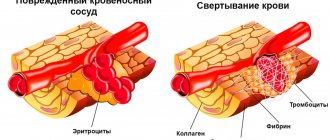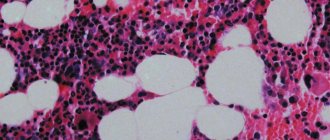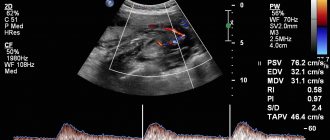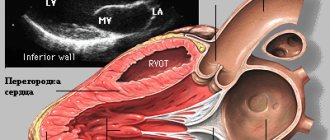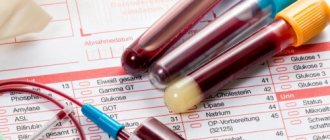To diagnose diseases of the liver or pancreas, you can donate blood from a vein for GGT. This abbreviation stands for gamma-glutamyl transpeptidase. If you receive results in which the gamma of HT is increased, then this may indicate gallstones, toxic liver damage, alcoholism, diabetes mellitus, pancreatitis in the acute or chronic phase, hyperthyroidism, even prostate, liver or pancreatic cancer. But don't panic in advance. This number may be higher if you are taking oral contraceptives, estrogens, or other medications that affect test results.
When is it recommended to take GGT?
If you know about your problems with the liver, pancreas, kidneys or other organs of the gastrointestinal tract, then most likely you have already donated venous blood more than once in order to determine the gamma-GT indicator.
It is necessary to control it if you know that you have the following ailments:
- chronic hepatitis, including its forms without jaundice,
- cancer of the pancreas, liver or prostate;
- alcohol addiction that you are struggling with.
In cancer, the GGT indicator is used to monitor the effectiveness of treatment; for the same purposes, it is used when fighting addiction to alcohol.
They find out whether the HT gamma is increased or not, also in order to diagnose liver damage that is accompanied by cholestasis. This can be, for example, with viral or congenital hepatitis and obstructive jaundice, biliary atresia. This indicator is monitored after myocardial infarction. In addition, it is possible to find out whether the level of gamma HT in the blood is elevated or not to check the hepatotoxicity of drugs.
References
- Clinical guidelines for the diagnosis and treatment of cholestasis. Russian Gastroenterological Association Russian Society for the Study of the Liver, 2013
- Clinical recommendations “Alcoholic liver disease”: - Scientific Society of Gastroenterologists of Russia, Russian Scientific Medical Society of Therapists, 2021.
- Letter of the Ministry of Health of the Russian Federation dated November 2, 2021 N 15-4/10/2-7675 On the direction of clinical recommendations (treatment protocol) “Acute fatty liver degeneration in pregnant women: intensive care and obstetric tactics”, 2021.
- Anesthesia and intensive care for acute fatty liver degeneration in pregnant women Clinical guidelines. Treatment protocol: - Kulikov A.V., Shifman E.M., 2015
Reasons and mechanism for increasing enzyme activity
Gamma-glutamyl transpeptidase is directly involved in amino acid metabolism. It is a catalyst for the transfer of the gamma-glutamyl residue from the gamma-glutamyl peptide. The main organ where this enzyme is located is the kidneys: their content there is 7000 times higher than the amount in blood serum. In the liver there is 200-500 times more GGT, and its content in the pancreas is not too different. It is also present in the intestines, spleen, heart, brain, skeletal muscle and prostate.
Gamma-GT analysis is elevated usually due to increased activity of this enzyme. And it manifests itself when problems with the liver or biliary tract begin. Normally, GGT activity is insignificant; it is directly related to the excretion of the enzyme, which is synthesized in the liver. That is why, even when minor problems appear, gamma GT increases.
In what cases is research usually prescribed?
A blood test for GGT is important for diagnosing liver pathology; for this purpose it is usually prescribed along with the following tests: AST, ALT, bilirubin, alkaline phosphatase. GGT is highly informative in identifying obstructive jaundice, cholangitis and cholecystitis; the increase in the level of this indicator begins earlier than that of other liver markers and lasts longer.
In viral hepatitis, GGT does not increase much, and in this case, determination of transaminases (ALT, AST) is more useful. High levels of GGT are observed in cases of impaired bile outflow, obstructive processes in the liver (tens of times higher than normal), in the presence of primary or secondary (metastases) neoplasms, and in cirrhosis.
Diagnosis of diseases
Depending on the overall clinical picture, other blood parameters and test results, the doctor may suspect the development of certain diseases in you. Thus, gamma HT can be increased with the following ailments:
1. Cholestasis - the amount of the enzyme increases in both extrahepatic and intrahepatic forms of the disease. In this case, problems such as gallstones, obstructive jaundice caused by a liver tumor, and cholangitis appear.
2. Acute hepatitis of viral etiology, various toxic diseases.
3. Chronic hepatitis.
4. Pancreatitis - GGT will be increased both in acute and chronic forms.
5. Alcoholism.
6. Oncological diseases of the liver, pancreas or prostate.
In addition, if you are taking oral contraceptives, barbiturates, estrogens, or cephalosporins, your gamma TG levels may also be increased. You should not try to diagnose your illnesses yourself; only a doctor can diagnose them.
Complexes with this research
Women's check-up No. 1 38 studies for an annual preventive examination 19,290 RUR Composition
Check-up No. 1 for children and adolescents Annual preventive examination program 10,950 RUR Composition
Male check-up No. 1 39 studies for annual preventive examination RUR 18,570 Composition
IN OTHER COMPLEXES
- Preventive check-up RUB 11,960
- Healthy interest 4,250 RUR
- Liver and pancreas RUB 3,050
- Biomarkers of liver functional capacity. Extended examination RUB 3,900
- Biochemistry of blood. 19 indicators 6,280 R
GGT level and age
If you go to donate blood to find out your gamma-glutamyl transpeptidase level, then you need to remember the following. Normally it is low, but the values obtained will depend on gender and age. Also, you should not rely on data from other laboratories; look only at the standards indicated in the research results. The level determined depends on the units of measurement and the equipment used.
Thus, some laboratories indicate that gamma GT will be increased provided that it is more than 36 for women and 64 U/l for men. At the same time, for children it is permissible to increase the amount of enzyme by 2 or even 4 times.
In other laboratories there is a division depending on age. Thus, for adult women the norm will be the amount of enzyme in the range from 6 to 42 units, for men - from 10 to 71. In adolescents aged 12 to 17 years, the amount of GGT in the serum should not exceed 33 U/l in girls and 45 in young men. Regardless of gender, at the age of 6-12 years the upper limit of normal is considered to be up to 17 U/l, from 3 to 6 - up to 23, from 1 year to 3 - up to 18, from 6 to 12 months - up to 34.
The picture is slightly different with newborns, in whom the work of all body systems is just getting better. It's okay if GGT is up to 185 before 5 days of age, and before 6 months it can even rise to 204 U/L.
Increased Gamma GT in women
Standard GGT levels in women may be slightly increased in the following cases:
- oncological formations in the mammary gland;
- use of hormonal contraceptives or drugs to maintain the balance of female hormones;
- during pregnancy.
First of all, the root cause is eliminated, followed by strict adherence to the diet and drug support for the liver. In the most extreme cases, surgical intervention is indicated (for oncology).
How to interpret the results
Even if you receive tests that show increased gamma-GT, you should not panic. To make a diagnosis, knowing only information about the activity of this enzyme in the blood serum is not enough. It is also important to find out the reaction of GGT to aminotransferases - GGT/AST or the ratio of GGT and ALT - this determines the spread of cholestasis in relation to cell membranes. The interaction of gamma-GT with other enzymes responsible for the development of cholestasis, for example, alkaline phosphatase, is also being clarified.
If the level of GGT exceeds the norm by 50 times, while the indicators for other enzymes are not too changed, then this indicates alcoholism. In addition, it will be increased in people who smoke more than two packs of cigarettes per day, are obese, or have eaten before taking the test. Please note that if the body mass index exceeds 30 kg/m2, then GGT may be 50% more.
Treatment of elevated GGT in the blood: how to lower and return to normal
Treatment of elevated GGT levels begins with diagnosing the condition of the body and identifying the exact cause of the increase in this enzyme. Treatment of diseases that cause increased gamma-glutamyl transferase can reduce its level.
In addition to drug treatment, it is necessary to adjust your diet. A menu rich in fruits and vegetables helps reduce GGT. First of all, these are plant foods rich in vitamin C, fiber, beta-carotene and folic acid:
- carrot;
- leaf salad;
- spinach;
- apricots;
- pumpkin.
It is necessary to stop smoking and drinking alcohol. Recommendations from the World Health Organization on how to quit smoking and how to stop drinking will help you get rid of these habits.
- increased ALT and AST - increased bilirubin - platelets above and below normal - increased and decreased albumin
Treatment of elevated GGT levels begins with diagnosing the condition of the body and identifying the exact cause of the increase in this enzyme. Treatment of diseases that cause increased gamma-glutamyl transferase can reduce its level.
It is necessary to stop smoking and drinking alcohol. Recommendations from the World Health Organization on how to quit smoking and how to stop drinking will help you get rid of these habits.
To diagnose diseases of the liver or pancreas, you can donate blood from a vein for GGT. This abbreviation stands for gamma-glutamyl transpeptidase. If you receive results in which the gamma of HT is increased, then this may indicate gallstones, toxic liver damage, alcoholism, diabetes mellitus, pancreatitis in the acute or chronic phase, hyperthyroidism, even prostate, liver or pancreatic cancer.
Treatment and adjustment of indicators
If, according to the test results, gamma-GT is increased, how to correct this indicator must be determined with a doctor. After all, it is not the enzyme level that needs to be treated, but the reason that caused its increase. So, if it is increased due to excessive alcohol consumption, then there is only one way out - to give up alcohol.
In other cases, it is impossible to do without consulting a specialist. If we are talking, for example, about pancreatitis, then a diet is important, in which you should give up fried and fatty foods, chocolate, and coffee. It is also a good idea to take medications that affect liver function. Some patients with hepatitis are prescribed a drug such as Ursofalk. It can also be used for jaundice in newborns to help establish normal liver function.
Gamma GT is increased - what does this mean?
The greatest activity of gamma-GT is observed in the kidneys, bile ducts, and liver, but the enzyme is also found in minimal quantities in other organs and systems (in the tissues of the brain, heart, skeletal muscles, intestines, spleen, prostate).
When the amount of GGT in the blood increases sharply, there may be several reasons for this:
- cholestasis (stagnation of bile);
- cytolysis (death of liver cells);
- exposure to alcohol;
- taking medications;
- oncological processes;
- pathologies of other organs.
Diagnosis of a disease that has caused a change in GGT levels is the prerogative of specialists, but exceeding the norm is always a signal from the body about the unfavorable condition of the liver.
Thus, an excess of GGT level by 5 times is observed when:
- taking certain medications;
- drinking alcoholic beverages;
- post-infarction state;
- congestive heart failure.
5-10 times - with:
- hepatitis;
- cirrhosis;
- other lesions of the liver and biliary tract.
10 times and higher – with:
- hepatitis, cirrhosis, cholangitis;
- oncological lesions of the liver;
- alcohol intoxication;
- blockage of the intrahepatic bile ducts or bile ducts;
- liver failure.
With all the variety of possible pathological conditions, only a few of them are diagnosed in the vast majority of cases.

